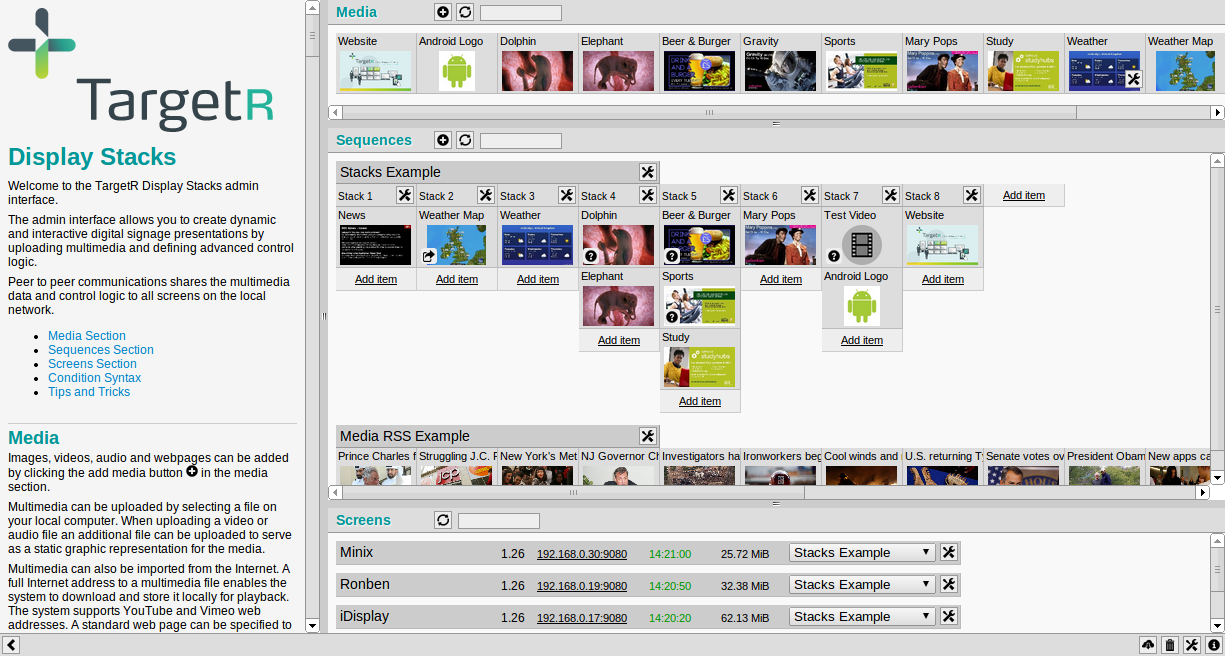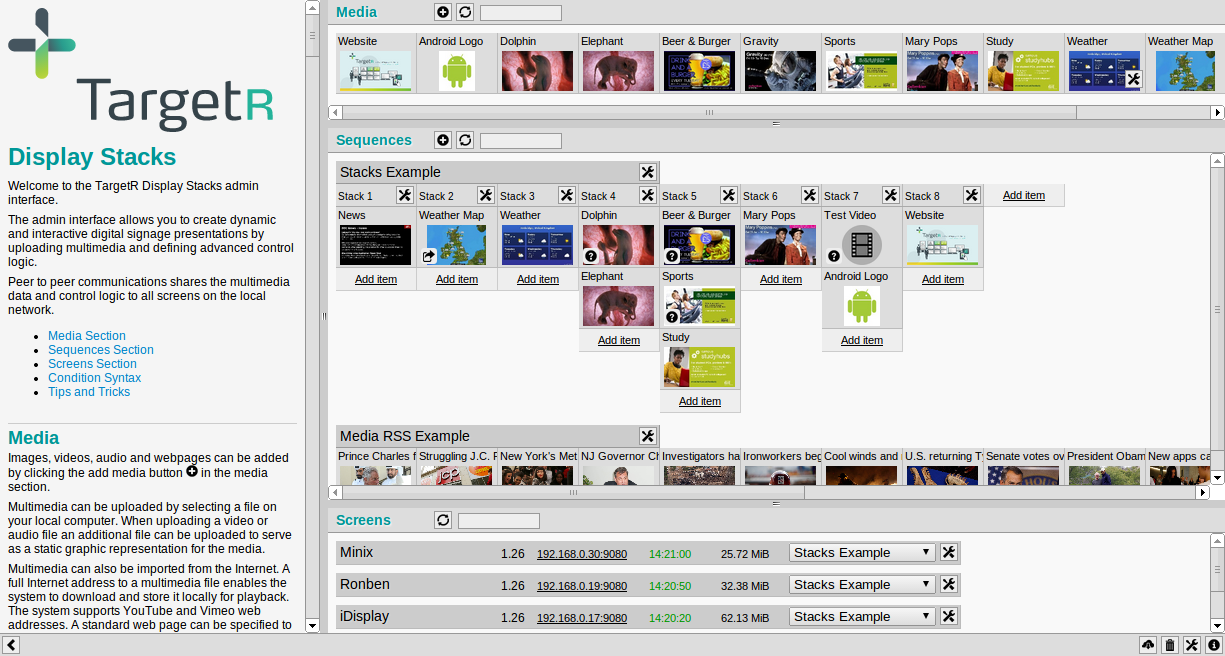
TargetR Issues Major Upgrade On Android Digital Signage Platform
January 28, 2014 by Dave Haynes

The UK-based software firm TargetR is introducing a major upgrade to its digital signage content management platform – putting server-level logic and s\ome pretty impressive capabilities into low-cost Android-based playback devices.
TargetR Display Stacks for Android, says a release, is a self-contained digital signage solution incorporating peer to peer communications, touch screen interactivity, face detection and revolutionary display logic processing.
Relevant and dynamic multimedia presentations require more than simple date and time scheduling. TargetR Display Stacks unlocks new possibilities because both logic and data can be modified in real time automatically. It is finally possible to display an ice cream advert between June and September when the temperature is above 25 degrees centigrade, ice cream is in stock and the screen is within one mile of the beach. The stacking concept and the powerful administration interface sets Display Stacks apart from traditional solutions typically restricted to playlists and simple scheduling.
Interactivity is a rapidly emerging area for digital signage. As people become accustomed to touch screens on phones and tablets they expect more from screens displaying advertisements out of the home. Display Stacks can be configured to display specific media or sequences after touching regions of the screen and also supports interactive HTML5 content – ideal for kiosks. The events system even allows simple gesture control using the built in face detection.
Transferring high definition multimedia content is very demanding for slow Internet connections, especially when there are many screens on the same network. Display Stacks builds a powerful peer to peer network where data is transferred locally between screens quickly and efficiently. As an added benefit, it is no longer necessary to have a central server, making this a very cost effective solution.
TargetR Display Stacks is available starting today (Jan. 28) on Google Play now, free of charge for the first 4 devices.
 Stuart James of TargetR told me the software team “has been working on this version almost around the clock for the last 3 months.”
Stuart James of TargetR told me the software team “has been working on this version almost around the clock for the last 3 months.”
I asked him to provide a little more laymen’s information about some of the key points, like the distinction between the existing and new version:
“The current TargetR player is entirely reliant on the server and can not do anything other then take instructions on what to play,” says James. “There is no ability to control it other then from the Web Application hosted on a server somewhere on the Internet. DIsplay Stacks includes the server logic locally(on the device) and the entire Web Application is compiled and running as a service, for example you can navigate to http://IPADDRESS_of_DEVICE:9080 and control it (easier to do from a desktop/laptop of course) . Any instance of Display Stacks installed on a local network will find each other automatically and become visible in the web interface.
“Based on many partners/customer requirements there is still a big demand it seems for locally controlled (within a LAN) signage players, our previous version could only be controlled by our Cloud platform or by an Enterprise Deployment (as our larger partners generally have). We will be extending Display Stacks in version 2.x to include Cloud control. (~1-3 months) and will be an add-on.”
I asked whether the face detection stuff borrowed on open source code or was an existing product integrated into it. Turns out it is neither:
“The Face Detection component (not recognition) has been built into Android for many years,” says James. “It was present in our release dating back to early 2012. For basic face detection effectively the process was take a picture, analyse it for faces, and report it back to server, the frequency of which was done at 5 seconds mainly due to the fact that Android devices are not capable of both 1080p playback + face detection on a single/dual core without affecting playback.”
“The new Android SDK includes a completely updated API that is called “Camera. The Camera API is far more efficient (with compatible hardware/firmware). In relation to “facial recognition” where people are classified into female/male + ages, this is something that can really only be done using something such as OpenCV, which we have looked at integrating into our player but have been hesitant to do so, as the CPU on arm devices has just not been powerful enough to do this, as well as play DS content.”
As for more detail on pricing:
“Display Stacks, which is a fully functional version, is free for up to 4 devices, per location. Pricing beyond this is still being discussed (with our partners), but it is more than likely to be a one-off perpetual license fe,e starting with a cost based on 5 devices. Our intention is to then sell add-ons to Display Stacks such as centralized cloud control, content integrations (including in Display Stacks is support for RSS, Youtube,Vimeo, Local uploads, remote server imports, MediaRSS, HMTL5 and HTML pages) and reporting, which would be monthly subscription based.”
The platform will be demo’d at DSE, with an as yet unnamed partner that has a substantial booth presence. I’m eager to see TargetR, as James and his team have a lot of energy and skills behind the product.



Leave a comment